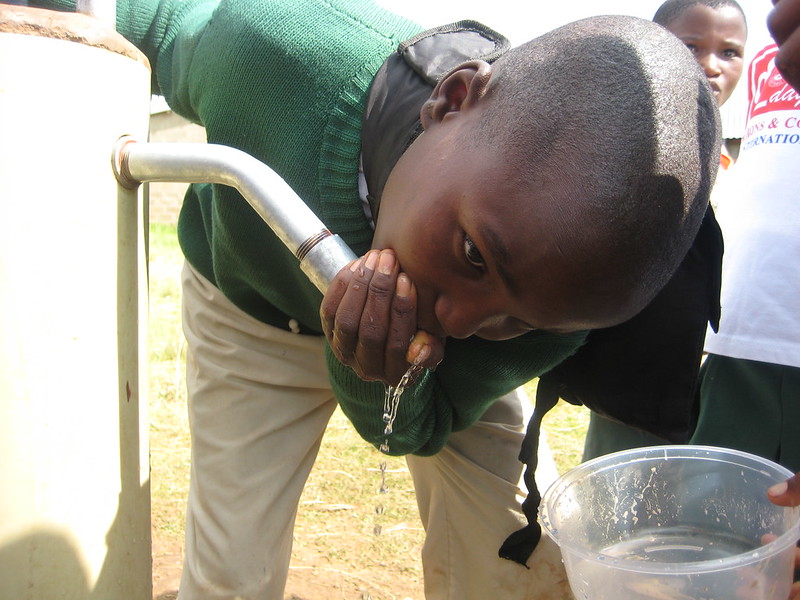8 Facts About Living Conditions in Lesotho

Lesotho is a small, mountainous African kingdom surrounded by South Africa. Lesotho’s population is 72 percent rural and 80 percent are engaged in the agricultural sector, which has suffered greatly due to recent droughts, climate change and failed harvests. Lesotho is classified as a lower-middle-income country; however, 57 percent of its two million residents live below the poverty line. Here are eight facts about living conditions in Lesotho to know.
8 Facts About Living Conditions in Lesotho
- HIV/AIDS – In 2017, 23.8 percent of adults aged 15 to 49 in Lesotho had HIV, 320,000 people were living with HIV and there were 4,900 AIDs-related deaths. NGOs such as UNAIDS, UNICEF and the WHO have been working with Lesotho’s government to fast-track HIV prevention, testing and treatment. In 2017, 80 percent of people living with HIV in Lesotho were aware of their status, 74 percent of people with HIV were on treatment and 68 percent of people on treatment were virally suppressed.
- Tuberculosis – Around 405 out of 100,000 people suffer from tuberculosis (TB). This is one of the highest tuberculosis rates in southern Africa. This airborne bacterial disease is a huge public health crisis in Lesotho and is seen as a co-epidemic with HIV/AIDS. The crisis has narrowed substantially from the TB rate of 695 out of 100,000 people in 2007. Progress is being made, but there is still much to improve upon in terms of public health and living conditions in Lesotho.
- Access to Clean Water – The Highlands Water Project raises millions of dollars annually for Lesotho by selling water to its neighboring countries, primarily South Africa. Still, around 18.2 percent of people in Lesotho do not have access to clean drinking water. Many must walk for hours just to reach water access points that may or may not be in working order. The Metolong Dam Project is a promising project to help increase clean water accessibility. When completed in 2020, it is predicted that water supply will reach 90 percent of the district Maseru and sanitation coverage will increase from 15 to 20 percent.
- Food Insecurity – Drought in Lesotho combined with two successive crop failures, low incomes and high costs for food left more than 709,000 people in “urgent need of food assistance” from 2016 to 2017. The food insecurity crisis worsened with a steep reduction in harvest for Lesotho’s main crops of maize, sorghum and wheat between 2017 and 2018. The World Food Programme (WFP) is helping to reduce hunger in Lesotho by supporting more than 260,000 people affected by drought with monthly food distributions and cash-based transfers during the low-yield season.
- Stunting – One in three children under 5 years old are stunted as a result of chronic malnutrition. Acute malnutrition is a major problem in Lesotho’s population that affects children the most. Many NGOs focus on alleviating child hunger caused by poor living conditions in Lesotho. UNICEF provided support to 1,750 children suffering from severe acute malnutrition in 2017 and the Food and Agriculture Organization (FAO) helped 2,560 families start home-based gardens with vegetables to create a stable, healthy food source. In addition, the WFP currently provides free healthy school meals to more than 250,000 children in 1,173 of Lesotho’s primary schools.
- Housing – Around 70 percent of Lesotho residents live in substandard housing conditions with issues ranging from overcrowding to lack of toilets. Nonprofits such as Habitat for Humanity operate in Lesotho to build homes for vulnerable populations, but individuals also can have a large impact on housing and development. A winning proposal by Javed Sultan for Climate CoLab laid out the success in building affordable and climate responsive homes for the elderly in Lesotho. Innovative and cost-effective building in Lesotho has the potential to help many people in housing poverty.
- Sanitation – Access to proper sanitation facilities has increased every year since 1994. In 2015, 30.3 percent of the population had access to improved sanitation facilities that included flushing systems, ventilation latrine pits and composting toilets ensuring hygienic separation from human waste. In 1994 only 22.6 percent had this level of sanitation. This shows that progress is being continually made to improve this area of living conditions in Lesotho, but there still is much to accomplish.
- Education – In 2010, Lesotho established Free and Compulsory Primary Education by law. The net lower basic enrollment ratio increased from 82 percent in 2000 to 95 percent in 2010. Lesotho also has one of the highest literacy rates in Africa, with 85 percent of people over the age of 14 being literate. The Government of Lesotho allocates 23.3 percent of its annual budget, or 9.2 percent of Lesotho’s GDP, on the education sector showing its commitment to improving its education system.
These eight facts about living conditions in Lesotho show that there are still major issues including epidemics, water, hunger and sanitation crises that need to be further addressed. However, progress is being made to improve living conditions on many fronts due to the collaboration of charitable organizations and the Government of Lesotho.
– Camryn Lemke
Photo: Flickr
